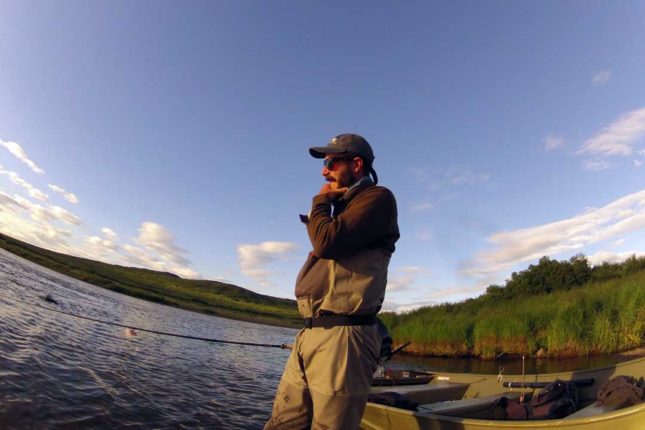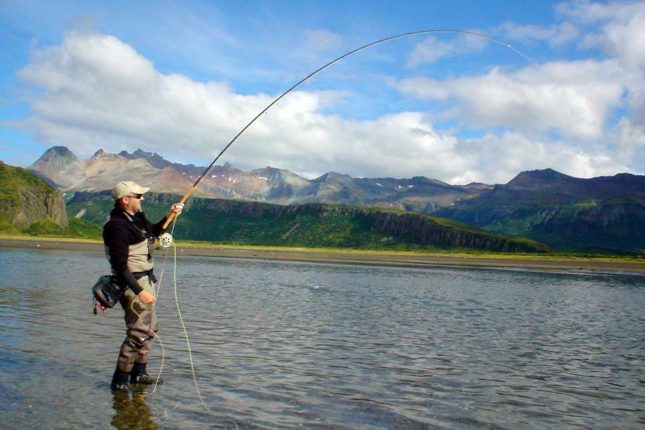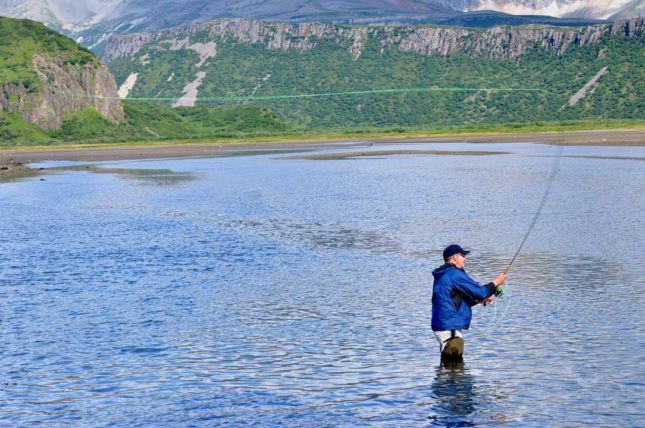Epic Blog
Machete’s Guide Gear Talk – Spey Fishing
10.05.20

Are you considering a spey or swtich rod for a future fly fishing trip in Alaska, but a bit overwhelmed? Read on.
Many of the anglers who come to fish with us at our remote fly fishing camp on the Pacific coast of the Alaska Peninsula are returning guests. Most of them, although certainly not all, will make the long voyage north with their own tried and true rods and reels in tow. Typically this will consist of two 9′ fly rods. A heavier salmon rod and a lighter Dolly rod. Previously we discussed what some different considerations are for what those two rods should be in weight. Now let’s shift gears from the world of conventional single hand rods to the world of spey.
Speyside
First off, you might be asking yourself what is a spey rod? The short story is that it’s a double-handled rod that is generally much longer in length than the conventional 9′ of most single-handed rods. The long story is that they are rods that traditionally measured in length anywhere from 17′ to 22′ and were first crafted from hardwood and then bamboo. They have a storied past, being first developed and employed by the gentry class of lords and noblemen in England and Scotland for the purposes of pursuing Atlantic Salmon on the fly during the 19th century. Any connoisseur of single malts might be familiar with the word, as it describes a regional variety of the spirit, Speyside scotch. That word is taken from the name of a Scottish river that drains into the North Sea, The River Spey.
Modern times

Modern spey rods usually run 12′ to 13′ long and have extra cork above the reel, plus an additional handle below.
Today’s modern spey rods, or two-handed rods, are not the unwieldy behemoths of the old world. Many tape out between the 12′ to 13′ range. This would generally be considered a true spey rod. Typically, anything under the 12′ length category is referred to as a switch rod. Whether it be a spey rod or a switch rod, they are all under the umbrella of the two-handed rod category. This term, two-handed, is a clue into the huge departure from casting a conventional fly rod.
Spey casting
The biggest physical difference between a spey rod and a conventional fly rod is not only the added graphite extending past the cork, it’s also the second handle extending down past the reel seat of the rod. This is the bottom grip, meant to be held with your nondominant hand as you cast the rod. The extra length of a two-handed rod adds weight. This added weight makes trying to attempt a conventional overhead cast with a spey rod impractical.
An effective spey cast therefore must deviate from the conventional method of throwing the fly line into the air to load, or bend, the rod. With both hands placed on the upper and lower grips of the rod, the spey cast is achieved by sweeping the line across the waters surface. The resistance of the line being dragged across the waters surface during the sweep effectively bends (loads) the rod. When we roll cast the line with a conventional fly rod we do something akin to this, although I think it is misleading to suggest that they are the same thing.
Apples to apples
We will not venture down the rabbit hole regarding the many different kinds of spey casts that exist, although it is worth mentioning that there are many. There are also different styles of casting a spey rod. They are mostly dependent on the type of line you’re using, but they all rely on the principle of the line making contact with the water to load the rod.
So, a few technical paragraphs later and we have a rudimentary understanding of what a two-handed rod is and how it differs from a conventional 9′ single-handed fly rod. But what are the advantages of using this kind of rod? And more importantly, what considerations should the spey curious angler make for bringing a two-handed rod along for a week of fishing with us at SAFARI camp?
More on that next time. Stay tuned.
Find more Machete articles here.
Posted in All Posts, Fishing, Gear, SAFARI


